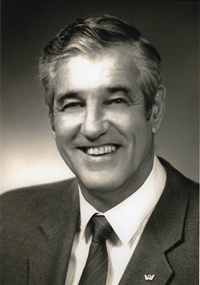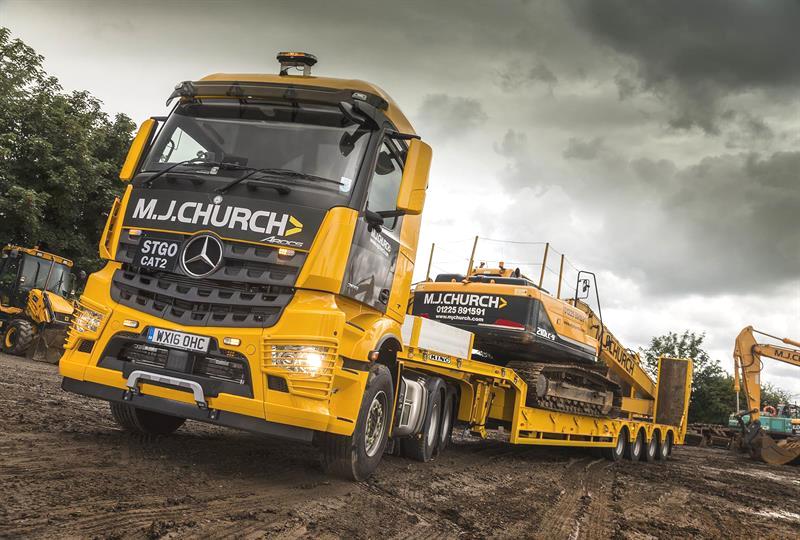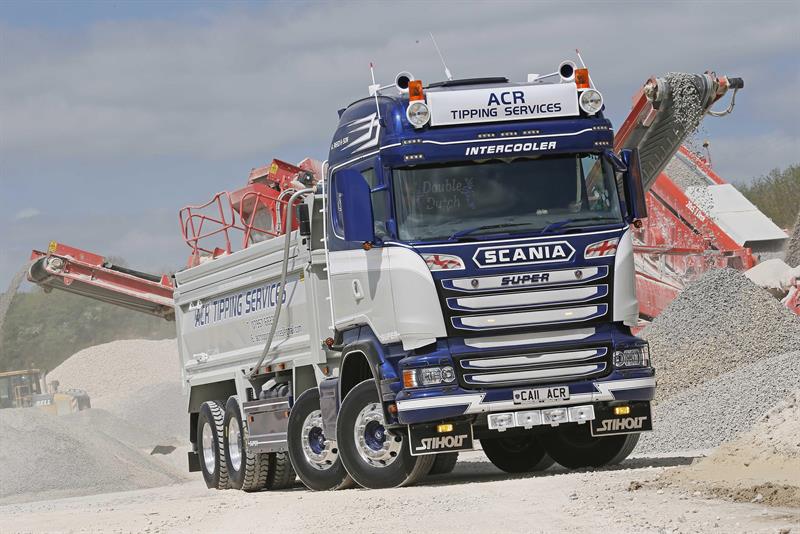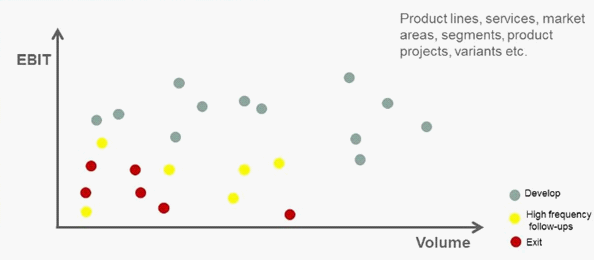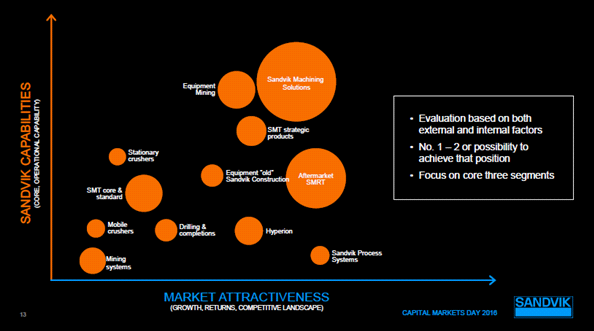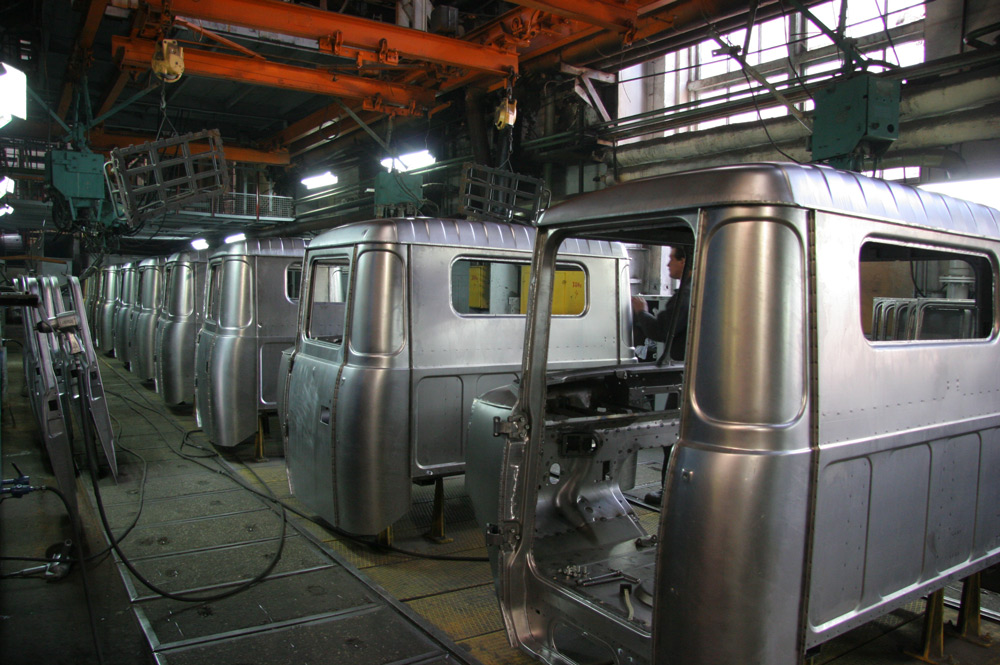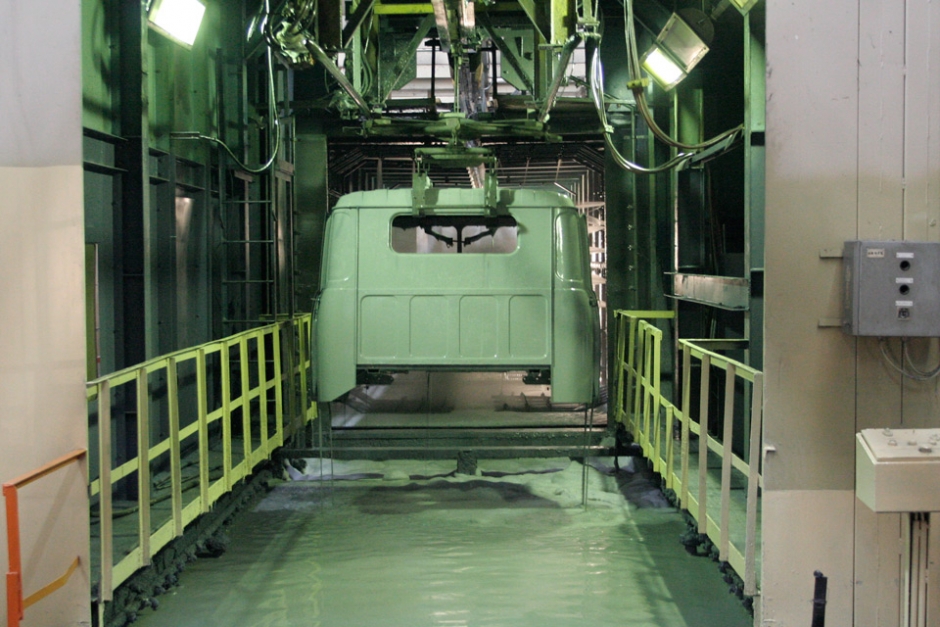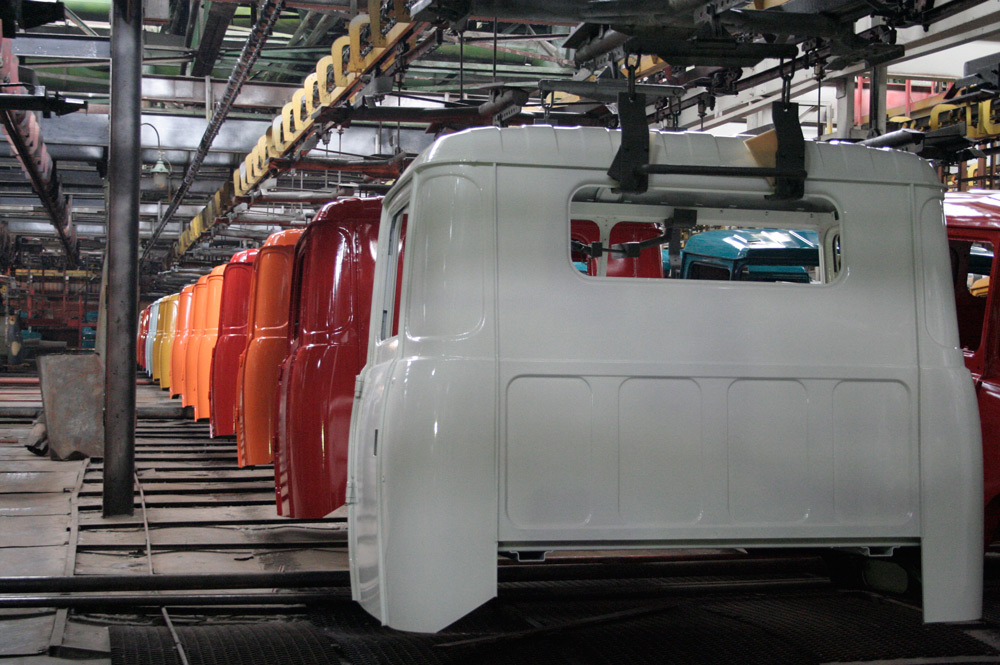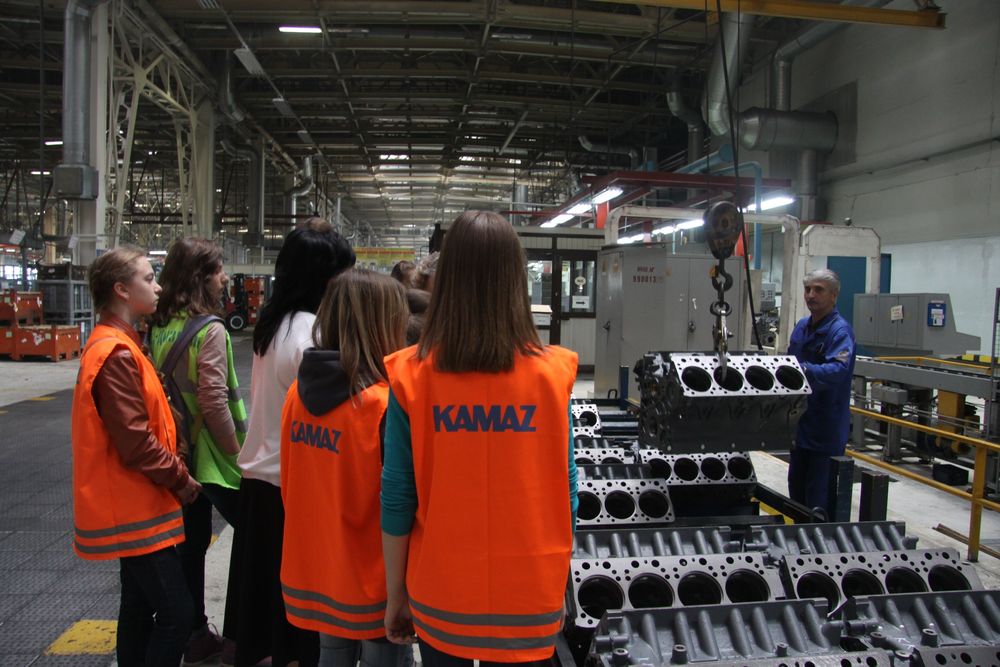
kscarbel2
Moderator-
Posts
17,891 -
Joined
-
Days Won
86
Content Type
Profiles
Forums
Gallery
Events
Blogs
BMT Wiki
Collections
Store
Everything posted by kscarbel2
-
UK Independence Party (UKIP) leader Nigel Farage tells EU Parliament: 'You're not laughing now' Video - http://www.bbc.com/news/world-europe-36650014
-
Remembering those who got you to the party is how a professional and respectful truck company operates. When Walter May passed away in March of last year, ignoring our tradition at the former Mack Trucks, the Mack brand of Sweden's Volvo Group said NOTHING !!! At the former "American" Mack Trucks, ''our" headquarters always put out a notice to all company and dealer locations when a member of the Mack family was seriously ill or had passed away. Walter May, Mack Truck’s legendary senior engineer and COO, was co-inventor of the iconic American truckmaker’s advanced Maxidyne high-torque rise engine technology. And that achievement was just the tip of the iceberg. Had it not been for Walter May, there would not be a Mack brand today for Volvo to be profiting from.
- 1 reply
-
- 1
-

-
Prime Mover Magazine / June 27, 2016 Penske Commercial Vehicles is mourning the death of Bob Shand, co-founder of Western Star Trucks in Australia. Shand, along with Kit Bleakly, played an instrumental role in establishing the heavy-duty truck brand in Australia in 1983. Together, they introduced the North American brand to Australia from their facility in Wacol, Queensland, where the brand still operates today. “The renowned features of today’s modern day Stars – including their strength, reliability and comfort – come as a result of Bob’s commitment to establish Western Star as the truck of choice in the Australian market,” Western Star Trucks Australia said. “Bob’s legacy will forever remain his unwavering commitment to the customer, as he strove always to deliver a tailored customer experience. This commitment and spirit continues to be the driving force behind the Western Star Trucks brand, despite market and ownership changes" (first with Transpacific and recently with Penske Automotive Group). “The entire Western Star Trucks business and team remains indebted to Bob and his work in establishing the brand in Australia. We will miss him greatly and our deepest sympathies go out to the entire Shand family.” .
- 1 reply
-
- 1
-

-
Extra Mile Stories – Why UD is my heavy truck of choice
kscarbel2 replied to kscarbel2's topic in Trucking News
-
Transport Engineer / June 27, 2016 Civil engineering, earthworks and waste management contractor MJ Church has commissioned two 80-tonne Mercedes-Benz Arocs tractor units just under a year after putting its first Arocs eight-wheelers into service. The Marshfield, Chippenham-based company’s new 6x4 tractors – which were purpose-designed for construction applications – were specified with flat-floored StreamSpace cabs and are now being used to transport diggers, excavators and other heavy plant on new, four-axle King low-loader trailers. Both are 2651 models with Mercedes’ 517bhp six-cylinder engines driving through 12-speed PowerShift 3 AMTs (automated manual transmissions) – adding to the firm’s 80-strong truck fleet. MJ Church also went for high performance, three-stage auxiliary brakes, designed to reduce wear on the service brakes while also improving safety and control. “The driver feedback on the new Arocs tractors has been really good,” states transport manager Karl Wintle. “They’re impressed with the engine and gearbox, particularly in terms of low-speed manoeuvrability, while the cab – although slightly smaller than they’ve been used to – has also won praise as a spacious, well-designed workplace.” Mercedes-Benz dealer City West Commercials’ driver-trainer Justyn Marshman delivered driver training on the new 80-tonne tractors. “I spoke afterwards to one of our drivers, who I’d describe as quite ‘old school’,” says Wintle. “He couldn’t rate Justin highly enough. He wasn’t being told how to drive. Rather, he was shown what the vehicle’s capable of and how he could make life easier for himself.” Wintle explains: “So, for example, this particular individual would never use the engine retarder on his previous vehicle, but he’s certainly doing so with this one. “He’s also driving in a more predictive manner, anticipating rather than reacting to changes in road conditions. “This means less fatigue for him, which is also better and safer for other road users. And as a fleet operator I’m happy too, because I know there’s going to be less wear and tear on the vehicle.” MJ Church’s earlier fleet of eight 8x4s are all Arocs 3240s with steel Charlton tipping bodies and, in two cases, Palfinger Epsilon grabs, on muckaway work, as well as a pair of Hyva hook-loaders based on the same chassis. “The drivers who use these Mercedes-Benz vehicles definitely rate them over our other truck marques in terms of ride comfort,” comments Wintle. “The Arocs are also well ahead in terms of economy – at 9.2 mpg, their average returns are a mile and half better than the competition, which is brilliant. .
-
Transport Engineer / June 27, 2016 ACR Tipping Services’ reckons its new Scania R cab Loadmaster tipper – dubbed Double Dutch – is a stop-you-in-your-tracks truck that resets the bar on quality. “I’ve always liked the traditional, slightly retro look of many Dutch liveried vehicles,” explains Andy Reed, who owns the Bicester, Oxfordshire firm. “I wanted to recreate that image on this, my first ever new truck [so] many of the detail parts, such as the mudflaps, extra lights and the Scania logo on the front grille, had to be sourced in Holland.” In addition to the standard Loadmaster spec, Reed’s first new truck features full-length detachable steel bodyside extensions that sit between the body’s headboard and the tailgate hinge. These are removable, and provide additional load retention and security, although extra payload volume can also be achieved with lighter cargoes. Beyond that, though, it’s about the paint job. Reed went for shades of blue and grey combined with white stripe detailing – with the finished job taking no fewer than nine months . “All in all, it’s been one incredible project, and the result is a tipper that’s truly unique,” insists Reed. .
-
Jay Leno's Garage - Jeff Dunham's AMC Gremlins
kscarbel2 replied to kscarbel2's topic in Odds and Ends
Paul, back then, the 304 cubic inch V-8 powered Gremlin with the 4-speed manual transmission was a fun car to drive. It was basically an American 2-door Golf. -
The Volvo brand will always be the priority, sitting alone in the front row. The acquisition of the other brands was always about acquiring market share and/or absorbing competitors. They are a means to an end. Volvo doesn't understand the value of the Mack brand. And under Volvo today, none of the Mack brand leadership have a background in trucks. Volvo doesn't listen to the voices of its US dealer body (the general consensus of Mack dealers coast-to-coast is that Volvo doesn't think these Americans could possibly know anything). The end result is, you have an unhappy dealer body, product line-up shortcomings and stagnant sales growth.
-
Final preparations for the world’s first electric road project
kscarbel2 replied to kscarbel2's topic in Trucking News
-
Dagens Industri / June 27, 2016 Volvo is slowing down truck production a little further over the summer in North America, in order to balance inventory with production and classes of dealer. At Tuesday's investor meeting, CEO Martin Lundstedt spoke of a weak market in North America at the moment. "As usual when you have a downward movement, it takes a while to adjust inventories [of customers]. At the beginning of the year, we said that it would probably take until late summer or autumn before that adjustment had been made, but now we think it may take the entire year," said Lundstedt. He also mentioned the company's landscape prediction on a annual market for heavy trucks in North America at 250,000 vehicles. “The competition has roughly the same projections”, said Martin Lundstedt. He said that Volvo is secure in being able to handle market fluctuations in North America.
-
Bolagsfakta / June 27, 2016 Volvo is willing to sell its businesses that are not performing, but the company is silent about which business units those are. The chart below of possible sell-off candidates reflects which units are underperforming in Volvo Group. "It's a bit early to say how much revenue these stands for, it was more a schematic way to look at it," said CEO Martin Lundstedt at a meeting with investors in London on Monday. The chart can also refer to both truck operations, for example, and the whole group, "he said, stressing that the purpose also, therefore, was not taking the chart too literally. Sandvik, whose share stake controls Industrivärden, and Volvo board member Helena Stjernholm, Industrivärden's CEO, showed a similar chart in its capital market day a month ago. .
-
Dagens Industri / June 27, 2016 Volvo has several strengths: favorable global market positions with high market share and high operational capacity in various regions, a steadily increasing profitability and well dedicated staff. With an increasing scale, however, Volvo has increased in complexity, and to some extent even the bureaucracy, something that must be handled. Furthermore, a problem is that the market share of some acquired operations has declined, and the reasons for this must be analyzed and addressed. At the start of his meeting with investors in London on Monday, Volvo Group CEO Martin Lundstedt said Volvo has over the past years had too much focus on the structure and portfolio, at the expense of operational efficiency. Furthermore, he said that Volvo should be able to expand the service by selling more to the existing fleet of 900,000 vehicles in service. He feels the term “aftermarket” is a funny expression, because service is a market in itself. He also mentioned that investment, i.e. capital expenditure (CAPEX), at Volvo is too high and exceeds depreciation, which in the long run is not sustainable and must be addressed. A new cost cutting program does not seem to be appropriate, according to Martin Lundstedt: "Now it's more about continuous improvement in all areas on a daily basis," he said, and spoke of pragmatism. "Setting goals is easy, but it does not change the underlying behavior," he said after mentioning that the right company is key to the success of the company. Volvo's highest strategic priority is to strengthen the right qualities of the Volvo brand as a global premium heavy truck, as well as strengthening the sister brands Renault, Mack and UD Trucks' position and market share. Lundstedt will attened an investor meeting in London on Tuesday. For all truck brands, Lundstedt said, the future is characterized by concentrating on core markets and not go into each other's strong geographics.
-
Okay. When you gave Barry the 1QHA number "stamped" on the front of your axle beam for him to reference to, what are the two 10QH part numbers he came up with for tie-rod ends? 10QH11A/10QH12A? 10QH35/10QH36?
-
Marmon question
kscarbel2 replied to ws721's topic in Antique and Classic Mack Trucks General Discussion
http://www.marmontruckparts.com/site/Truck_Parts.html Also, is Dutchman's Truck Service (Denver, PA) still in business? They were a huge and knowledgeable Marmon distributor. (It's founder, Melvin Sauder, passed away in 2013) -
Transport Topics / June 27, 2016 Daimler AG and other truck makers are fighting to delay new emissions standards in Mexico as the government struggles to control the worst smog in the capital city in 14 years. The Latin American nation [next door to the U.S.] published draft rules in December 2014 to slash emissions on all new trucks and buses. Since then the regulations have stalled as companies such as Daimler, which is Mexico’s largest builder of heavy-duty vehicles, call for less stringent controls, saying the tighter standards could make new trucks too expensive for consumers. “They have been pushing for delays and interim standards which could actually make emissions from these vehicles worse,” said Katherine Blumberg, of the International Council on Clean Transportation, or ICCT. Daimler and other truck manufacturers say Mexico should focus on renewing the country’s aging fleet of vehicles to clean up the smog and are calling on the government to provide subsidies as well as slowing the expensive new emissions standards. The government, which is cutting spending after a slump in oil prices, wants industry to bear the cost. While the two sides argue, the 20 million residents of Greater Mexico City typically wake to a blanket of smog so thick it cloaks volcanoes as high as 18,000 feet that ring the capital. The authorities estimate that smog kills 2,700 people each year in the city. As pollution has worsened, that estimate may need to rise, says Mexico’s Environmental Rights Center, known as Cemda. Ozone levels climbed to their highest this spring since 2002, forcing authorities to impose emergency restrictions. Daimler says that the retooling needed to comply with the new regulations would raise truck prices as much as 20%, making them so expensive it would deter the purchase of new vehicles. That would lead companies to keep older polluting trucks on the road in a country where the average age of heavy vehicles is already 17 years. The equivalent shift in standards in the United States pushed prices up by about 17%. "We need to get many more new vehicles on the road and lower the age of those vehicles," said Stefan Kurschner, chief executive officer of Daimler Vehiculos Comerciales Mexico. "That will clean up the air." While Mexico is proposing to raise standards to Euro-6 from the current Euro-4, the nation’s truck and bus chamber Anpact is seeking simultaneous implementation for at least four years of both Euro-5 and Euro-6, the first being a standard that Europe no longer uses. This will prevent a collapse in sales, says Anpact, which also seeks tax breaks and incentives equal to about 20% of the price of a vehicle. "Publishing a new environmental standard alone doesn’t reduce emissions," said Miguel Elizalde, the president of Anpact. "The success will happen when transporters buy the new technology." He also faults the government for delaying new standards since at least 2009 by not making the cleaner fuel needed for the vehicles available nationwide. Publication of the new standards has been tied up in part by the industry’s insistence on a four-year transition from 2018, said Rafael Coello, an official with the nation’s environmental protection agency. Anpact’s "proposal is a big threat for public health," said Axel Friedrich, a former German environmental regulator and co-founder of ICCT, the group that raised concerns about VW test results. "If you have two standards, operators will buy the cheaper vehicle. Is the life of a Mexican worth less than the life of a European?" While Euro-6 standards requires a diesel particulate filter (DPF) to be fitted to trucks, Euro-5 doesn’t. The ICCT also points out that it isn’t only the wealthy nations of Europe and the U.S. that have imposed the new restrictions. Beijing will begin their implementation in 2017, with the rest of China and India following in 2020. In Mexico, the government gave initial approval to the Euro-6 standards in a draft proposal published in the official gazette in 2014, but has yet to publish the final rules a year and a half later. Deputy Environment Minister Rodolfo Lacy Tamayo told Bloomberg a final draft of the standards will be published next month after a meeting with Anpact. Mexico offers some inducements to junk old vehicles for new ones, but direct monetary incentives would be "impossible, and even more so with our budget cuts," he said. In Europe, Daimler has praised the Euro VI standard that came into operation in 2014, saying in one statement they would reduce nitrous oxide and particulate emissions by more than 90%, and that the company’s early adoption of the rule turned an obstacle into an "opportunity." What’s more, truck and bus makers in Mexico already make vehicles that meet the new standards for shipment to the U.S., said Cemda spokeswoman Margarita Campuzano. Mexico’s government is at fault for letting pressure from the automobile industry, whose $26 billion in new investment since the beginning of 2010 has been a motor of economic growth, delay the new standards, she said. The government must decide how far it can push the industry. Trucks dumped 5 million kilos of tiny particles into the atmosphere last year and were the source of 85 percent of those pollutants, known as PM2.5, which pose the greatest health risk, Blumberg said. "It’s totally unacceptable" that companies are pushing for two standards,said Antonio Mediavilla, Mexico City’s director of air quality control. "Why would you unnecessarily expose millions of people to higher pollution levels just because of economic interests?"
-
What about electric trucks? Jack Roberts, Fleet Owner / June 27, 2016 One of today's great ironies is that trucking – an industry notorious for being conservative in its outlook and slow to change – finds itself at the forefront of the technological revolution sweeping transportation today. That's because trucking, with its consistent high-mileage routes and (mostly) predictable routes is the perfect test bed for emerging technologies such as autonomous vehicles, alternative fuels, V2V communication, low-rolling resistance tires or self-diagnosing drivetrains. And now, you can add all-electric drivetrain to that list. I keep telling myself nothing technology-related can surprise me when it pops up in trucking anymore. But even I was taken aback in the past few weeks to see various developing technologies aimed at creating new all electric drivetrains for Class 8 commercial vehicles. Now, to be accurate, it wasn't the electric part of that news that surprised me. I'd said for several years now that I think all-electric trucks and vans will be an important arrow in a fleet manager's quiver in the years ahead. But the Class 8 component of the news did stop me in my tracks. Because I'd always assumed that given the current constraints on battery capacity and vehicle range, all-electric trucks would fill eventually fill a specific niche in urban, P&D applications. But even then I thought we’d see minimal penetration into Class 5 – but that would be about it. I may have miscalculated. Earlier this month, a company called Nikola 1 announced it is developing a Class 8 electric truck with a natural-gas engine to mitigate range limitations. Even more interesting was the company's claim that it already has more than 7,000 orders – with deposits – in hand for the new truck. The numbers on the new truck are impressive. Nikola 1 is claiming the truck has a 100 percent electric 6x6 drivetrain and will cut per-mile fuel costs in half, compared to diesel trucks. One the business end of the drivetrain, the company says the new, electric drivetrain churns out 3,700 foot pounds of torque and a whopping 2,000 horsepower with a 1,200 mile range and will capable of running 1 million fuel free miles. Those are serious, Class 8 long-haul performance numbers that would be impressive with any fuel type or powertrain. If the truck performs as advertised, it has the potential to be a game-changer within the industry. At the very least, it's a terrific example of how quickly technology is shaking up trucking today. Electric trucks have a long and proud history in trucking, of course. Given the limits of early gasoline engines in terms of power and range, electric trucks were a competitive option for fleets right into the 1920s when gas engines finally pulled away in terms of efficiency. (Diesel didn't become the dominant fuel major in the industry until after World War II.) As a result, electric drive technology stagnated over the past 90 years or so in North America. But the technology never faded completely away: Urban fleets in Europe – particularly in the United Kingdom – have been running electric vans and trucks for decades with excellent results. Here in the States, electric vehicles were pretty much limited to golf carts. But about 10 years ago, something funny started happening: People started getting old golf carts and customizing them for off-reading and hunting. They started showing up in suburbs as a quick, cheap and easy way to run the kids to the pool or head over the neighbors’ house for a dinner party. And over time, I think Americans slowly got used to the idea of electric-drive vehicles as safe, convenient, cheap and dependable means of short-range transportation. Which may explain why electric vehicles have hung in there: Two years ago, various news outlets, including Money magazine, were reporting that electric vehicles were fizzling as fuel prices fell from historical highs. But if Nikola is correct, a significant number of trucking professionals are now comfortable enough with the idea of an all-electric truck to at least give one a chance to prove itself. That's not to say that we're all going to be trucking off into the sunset tomorrow in an all-electric truck, of course. The real world is a brutal place in the trucking industry. And any new technology has to prove out before fleets will embrace it wholesale. But this unexpected move into the Class 8 market proves that trucking today has transformed from a conservative industry hesitant to try anything new into one where innovation is welcome – provided it brings real benefits and cost-savings to fleets out on the front lines.
-
When you gave Barry the 1QHA number "stamped" on the front of your axle beam for him to reference to, did he say your tie-rod ends were rebuildable? If they are, those parts might still be available individually. (ball stud, spring, seal, washers, ect.)
-
-
Automotive News / June 27, 2016 Soon, a transmission, thanks to new era of collaboration It's like the Hatfields swapping recipes with the McCoys. Or Michigan and Ohio State drawing up plays together. Starting next year, the Chevrolet Camaro will share a transmission with the Ford Mustang. Cross-town collaboration between General Motors and Ford Motor Co. was once unfathomable. But cost cutting, engineer shortages and increasing regulations made it inevitable. "It is surprising," said Gale Halderman, the Ford designer responsible for the exterior of the first Mustang. "Back in my time, we couldn't even talk to anybody from GM." Detroit's pony-car war has been raging for half a century now. In recent years, Ford and GM have worked together on a number of projects, including six-speed transmissions used in the Ford Fusion, Chevrolet Malibu, Ford Escape and Chevy Equinox. But none of those vehicles stirs up emotions like a Mustang's full-throated roar or a Camaro's smooth purr. The 2017 Camaro ZL1 is the first of eight vehicles slated to get GM's 10-speed Hydra-Matic automatic transmission. Some versions of the Mustang are expected to get the same gearbox for 2018. A screenshot from Ford's dealership parts-lookup system, posted on the website Mustang6G.com last week, all but confirmed longstanding rumors that the Mustang was in line for a 10-speed automatic. (A Ford spokesman declined to discuss its future product plans.) That transmission and a nine-speed automatic for front-wheel-drive vehicles were jointly developed by Ford and GM under a partnership they started in 2013. Ford has said the 10-speed will be offered in the 2017 F-150 this fall, and GM is expected to put it on full-size pickups next year. But that's not to say customers would ever notice any similarities between the Camaro and Mustang or the F-150 and Chevy Silverado. Even though some internal components are identical, the two companies will build, integrate, program and tune their transmissions independently. "We will each use our own control software to ensure that each transmission is carefully matched to the individual, brand-specific vehicle DNA for each company," Craig Renneker, Ford's chief engineer of transmission and driveline components and pre-program engineering, said when the automakers announced their 2013 deal. Fiat Chrysler Automobiles CEO Sergio Marchionne, in a manifesto last year advocating for industry consolidation, complained that up to half of a vehicle's development cost is spent on proprietary components that are "not discernible to customers." Devin Lindsay, a powertrain engineer with IHS Automotive, said the huge capital costs of today's industry make working together a necessity. "You look at the overall cost, and why duplicate that?" he said. "Imagine the amount of time it frees up at the engineering level. That allows them to use resources in other areas. You may want to collaborate on some things, but there are others that are more of the secret sauce that differentiates you with the buyer." And expect the sales race between the Mustang and Camaro to be as intense as ever. The Camaro was the top seller between the two in the U.S. from 2010 through 2014, but five months into 2016, the Mustang was on track to pull out a win for the second year in a row.
-
Volvo, Mack and UD a no-show for New Zealand truck expo
kscarbel2 replied to kscarbel2's topic in Trucking News
Sime Darby wanted to "walk the walk" and be a Volvo Group commercial truck distributor. However, when New Zealand's premier commercial truck event comes along (just once every 4 years), they don't want to pay to be there. Paying to be in relevant commercial truck shows is a cost of doing business as a distributor. I'm guessing Volvo usually pays a portion of the show costs as goodwill, but bleeding heavily at the moment, they refused. And Sime Darby was unwilling to man up and pay for it. The irony is that Malaysia-based Sime Darby is loaded (http://www.simedarby.com/). "If you want to play, you have to pay" -
Truck & Driver / June 2016 The showpiece of New Zealand’s new truck industry, the Transport & Heavy Equipment Expo held every 4 years, will disappointingly, be without a number of major truck brands next March*. * http://www.theexpo.co.nz/ The Malaysian-based Sime Darby Group, which represents Volvo, Mack, Hino and UD trucks – together accounting for around 30% of all new trucks (over 4.5-tonne GVM) sold in New Zealand so far this year – has confirmed that it will not be present at the event. Sime Darby Commercial Group’s NZ general manager Chris Brown has told New Zealand’s Truck & Driver that the stayaway call was “purely a commercial decision. “I guess it’s like any other business decision we make: We look at the value – and, to be honest, with the cost of it we couldn’t see it working for us.
-
KrAZ Trucks / June 23, 2016 KrAZ has switched to the use of new air drying paints and lacquers as part of ongoing energy conservation program to reduce production costs and improve quality of products. The change will enable KrAZ to replace outdated energy-consuming methods of paint drying at a temperature of up to +135 ºС in steam and gas drying chambers with less energy-consuming ones. The АС-010 acrylic primer that needs temperature of +20 0С is used now instead of the ЕP-0228 epoxy primer. Despite that the consumption of the АС-010 primer being 30 percent higher than the previous ЕП-0228 epoxy primer, the company will save about UAH 600 000 a year due to gas and power saving. For each truck, a savings of about UAH 500 will be realized. A full cycle of laboratory and production tests started in December of the previous year preceded introduction of new paints. Test results proved that new primer is not inferior in its physical and mechanical properties to previous one. KrAZ plans to continue working on reduction of production costs and improvement of quality of its products due to use of energy-saving technologies and up-to-date materials. Information: The paint shop at KrAZ Trucks is a large priming, painting and drying facility situated in the assembly shops. Truck parts and units are painted by dipping and convective spraying using air spray gun. Corrosion protection primer is applied on truck cab through electrophoretic (anaphoretic) process based on surface diffusion of paint. Major paints and lacquers used in production cycle are corrosion protection primers (alkyd, epoxy), ground coat enamels and enamels (alkyd, melamine, polyurethane, etc.). “AutoKrAZ” collaborates with over 20 companies and firms producing paints and lacquers both in and out of Ukraine. .
-
KamAZ Press Release / June 24, 2016 Via the City of Naberezhnye Chelny’s employment center, almost one hundred and fifty local students have been invited to work at KamAZ trucks over the summer holiday. Every year, the children of KamAZ employees are invited to work over their summer break at the company’s press and stamping plant. Preference is given to the children of socially challenged company staff members including widows, single mothers, workers with disabilities and families with many children. In June and July, the Department of Social Development will employ 40 part-time workers. A month on beautification and greening the truckmaker’s grounds can earn between 5,000 and 7,000 rubles. At the engine plant in June, 25 part-time workers found employment, in July already 40 positions have been created. Each will earn a little more than 3000 rubles. This summer, KamAZ’s utilities subsidiary Chelnyvodokanala will hire 60 part-time workers at a salary of 7309 rubles. All students provided to KamAZ via the city employment center will receive a good boost to their wages from the budget. In June, it will be 1275 rubles, in July - 1190 rubles. .
-
That........is an accident waiting to happen. For your wife's sake, I hope you have a generous amount of life insurance.
-
Volvo to pay $5 million for negligence in tractor-trailer crash
kscarbel2 replied to kscarbel2's topic in Trucking News
Truckers awarded $5 million for crash The Vancouver Sun / June 24, 2016 “On a dark, cold, snowy winter night, a long-haul trucker was driving his fully loaded tractor-trailer on the Trans-Canada Highway in Manitoba. Without warning all electrical power was lost. All lights were extinguished. “Darkness enveloped the truck. The driver lost all control of the steering and the trailer. Sparks began to fly amid the sound of screaming tires as the landing gear of the trailer scraped along the highway. The trailer jack-knifed and came towards the driver’s side of the truck’s cab. The driver and his wife, who had been resting in a bunk to the rear of the cab, both feared they would die… “(Amandeep) Hans screamed ‘what happened … what happened?’ and then ‘we are going to die … we are going to die.’” Far from the start of a bad novel, seven-and-a-half years after the Jan. 31, 2009 accident, the melodramatic opening was B.C. Supreme Court Justice Barry Davies’ way of beginning his judgment against Volvo Trucks, awarding the couple $4,867,694.75. Fortunately, Hans and his wife Pavandeep suffered no serious physical injuries but their lives were ruined by the crash. “The totality of the evidence establishes that Mr. Hans is now a shadow of his former self physically, emotionally and socially who is now incapable of enjoying life as he formerly did,” Justice Davies wrote. “He is also now incapable of maintaining gainful employment either as a long haul truck driver or by alternative means. The plaintiffs’ medical experts attribute Mr. Hans’ ongoing debilitating symptomology to Post-Traumatic Stress Disorder (PTSD) caused by the collision and his reaction to it.” A long-haul driving team, the couple launched the lawsuit alleging that Volvo was negligent in designing, manufacturing and installing a critical electrical connection in the truck that failed causing the collision. The province also sued Volvo to recover the medical costs — nearly $200,000. In June of 2005, the couple began driving as a team for Right Choice Transport Ltd. out of Surrey, driving flatbed trailers primarily into the lower U.S. Over the next few years they worked for a number of small-sized, long-haul flatbed trucking companies. “Mr. and Mrs. Hans shared the driving with each being limited by regulation as to the number of hours they could drive,” Justice Davies explained. “As a team they could double the potential income for the use of their vehicle. At the same time they were able to enjoy their travel to new places which they had never seen and enjoy time together pursuing what they loved to do. From time to time they were also able to take one or both of their children with them on their travels.” On Dec. 18, 2007, the couple traded in their 2005 Volvo 670 for a new 2009 Volvo 780, in part because the sleeping/living compartment was larger and more accommodating. But the truck developed electrical trouble and on July 4, 2008, the electrical system shut down during daylight hours without causing a crash. The problems persisted until the Manitoba mishap. As a result of the accident, although Hans suffered only minor physical injuries, his mental health issues were significant. Justice Davies concluded Volvo was negligent installing equipment that caused electrical power to fail. “More specifically, I find that it is more likely than not that the loose nut on the cab positive terminal that caused the loss of electrical power was not tightened to the requisite torque value when the truck left the factory,” he said. “I find the totality of the evidence leads to the irresistible inference that the nut on the cab positive terminal of the truck was negligently installed by Volvo.” The judge also found that Amandeep’s PTSD was caused by the collision. The more than $4 million he awarded the couple included the cost of medical care payable to the province. The total will change, Justice Davies said, because there are still several tax and cost issues to be resolved, including whether another company that did work on the truck should share liability.
BigMackTrucks.com
BigMackTrucks.com is a support forum for antique, classic and modern Mack Trucks! The forum is owned and maintained by Watt's Truck Center, Inc. an independent, full service Mack dealer. The forums are not affiliated with Mack Trucks, Inc.
Our Vendors and Advertisers
Thank you for your support!


